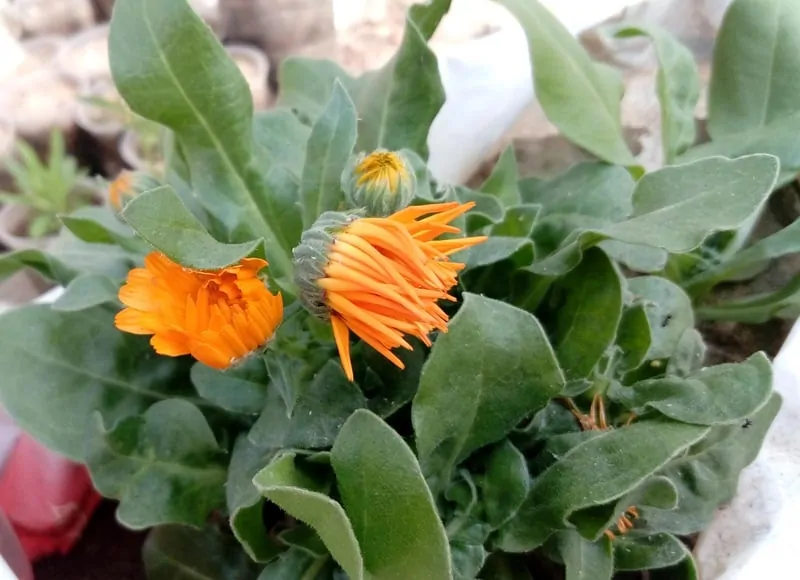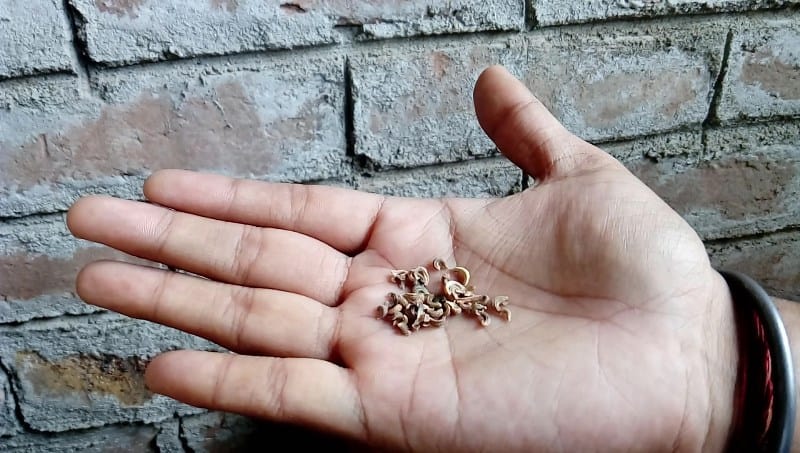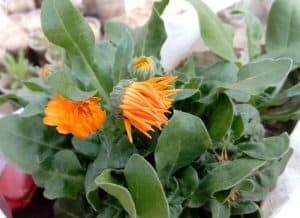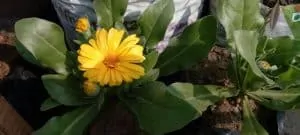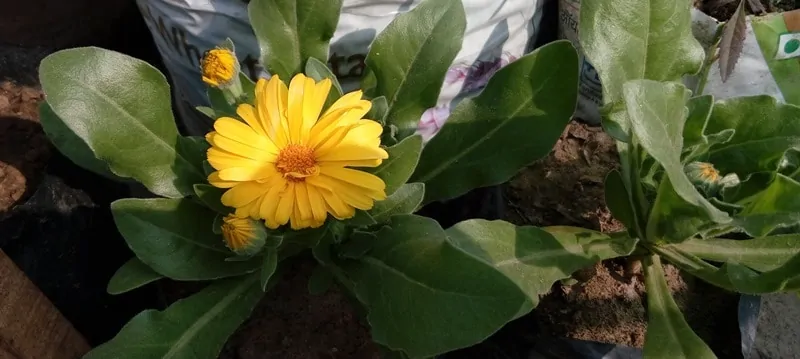Calendula is a flowering plant that belongs to the Asteraceae family. The name Calendula is given to the genus having more than 15 species with 50+ subspecies. It is a relative flower to the Marigold family. That’s why most of its common names are derived from its similarities with marigolds. Our Discussion starts with How to grow calendula, then care for it and finally harvest the mature flowers.
Calendula is a flower with many names. Some common names of calendula flowers are Pot Marigold, sea marigold, field marigold, and wild marigold.
What flower is calendula?– Calendula is a beautiful Yellow, Orange Daisy-like flower. It belongs to the Asteraceae family close to Marigold. This is why calendula is commonly known as “Pot Marigold”.
Types of Calendula
There are mainly 13 species of Calendula grown worldwide with more than 35 different subspecies. The cultivation of rest is not very common for commercial or decorative purposes.
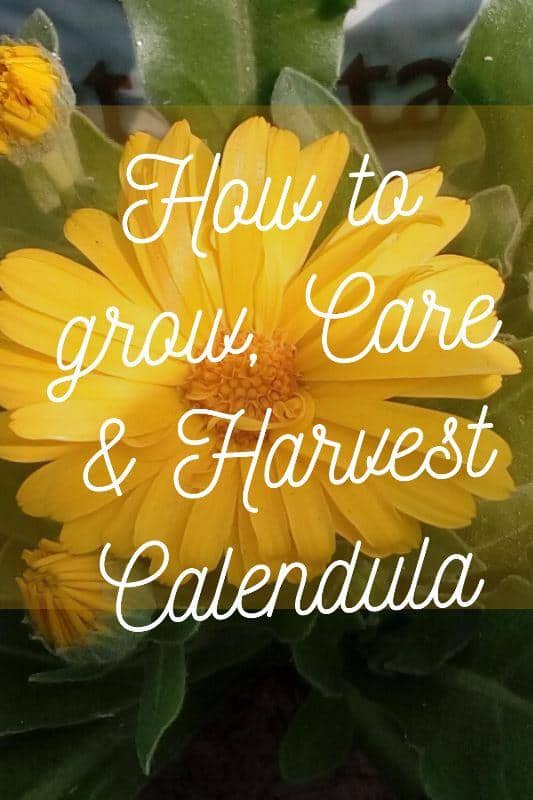
Read my last work on How to Grow and Care Marigolds Complete guide.
Different Species of Calendula with Common Names
- The Calendula arvensis– commonly known as field marigold or wild marigold.
- Calendula denticulata
- Calendula eckerleinii Ohle
- TheCalendula incana
- Calendula incanaalgarbiensis (Boiss.) Ohle
- Calendula incanamaderensis (DC.) Ohle – Common name–Madeiran marigold
- The Calendula incanamaritima (Guss.) Ohle – Also known as sea marigold
- Calendula incanamicrophylla (Lange) Ohle
- Calendula lanzaeMaire
- The Calendula maritima -Commonly called as sea marigold
- Calendula maroccana Ball
- Calendula maroccanamaroccana
- TheCalendula maroccanamurbeckii
- Calendula meuselii
- Calendula officinalis – pot marigold, garden marigold, ruddles, Scottish marigold
- The Calendula palaestina
- Calendula stellata
- Calendula suffruticosaVahl
- The Calendula suffruticosabalansae
- Calendula suffruticosaboissieri
- Calendula suffruticosafulgida
- The Calendula suffruticosalusitanica
- Calendula suffruticosamaritima
- The Calendula suffruticosamonardii
- Calendula suffruticosatomentosa
- Calendula tripterocarpa
Source-[ Wikipedia ]. For details, you can check the source of this information.
The most popular and commonly grown species of the genus Calendula is the ” Calendula Officinalis”.
The Scientific Name of beautiful Pot marigold Calendula flower is “Calendula Officinalis”. Today we are going to discuss various details about this flower variety.
Check out these high-quality hybrid calendula seeds on Amazon.
… Keep Reading…
Do you know Calendula and Marigold are like Brother and Sister or cousins, Why- coz they belong to the same family-Asteraceae.
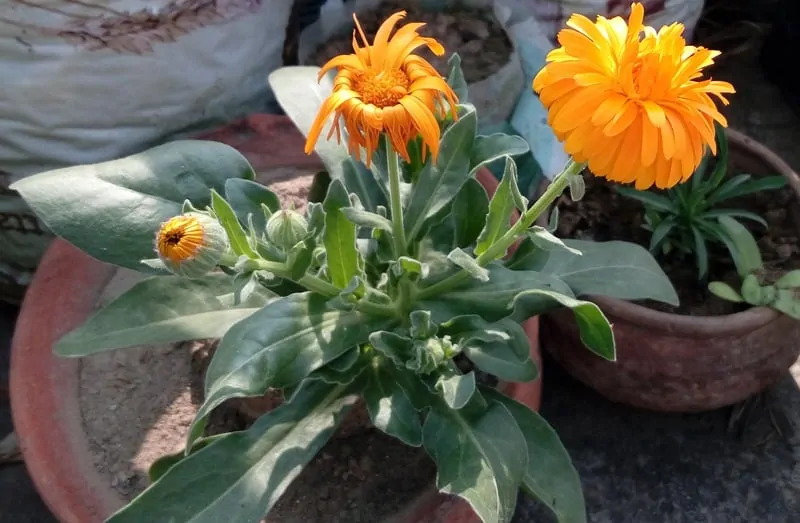
What is Calendula Officinalis?- It is commonly known as Pot Marigold or garden marigold. The Calendula Officinalis is a Species of Calendula genus that belongs to the Asteraceae family. It grows beautiful bright yellow and orange flowers that look similar to marigolds.
Varieties of Calendula Officinalis
|
Radio Extra Pink Surprise Touch of Red Neon Greenheart Orange Tangerine Cream Bronzed Beauty Citrus Cocktail Kablouna |
Sherbet Fizz Dwarf Gem Fruit Twist Golden Princess Bonbon Calypso Pacific Beauty Flashback Prince |
You can select any of these varieties but I would suggest preferring the short ones for containers and taller ones for flower beds.
Write down a comment about which one do you like to have in your garden. Also, let me know if you already have some.
Is this your first time with calendulas or you are having a problem with the selection of variety? You can ask me for any help or just visit your nearest nursery. Wanna buy seeds then check out my fav calendula seeds online.
Calendula Flowers
Calendula shows a slight variation in color shapes and sizes of flowers in its different varieties. Though only noticeable color option with calendula is Yellow and Orange. But with modern Hybrid seeds, you can grow calendula flowers having mixed patterns and gradient of colors-mostly yellow to orange and slightly red.
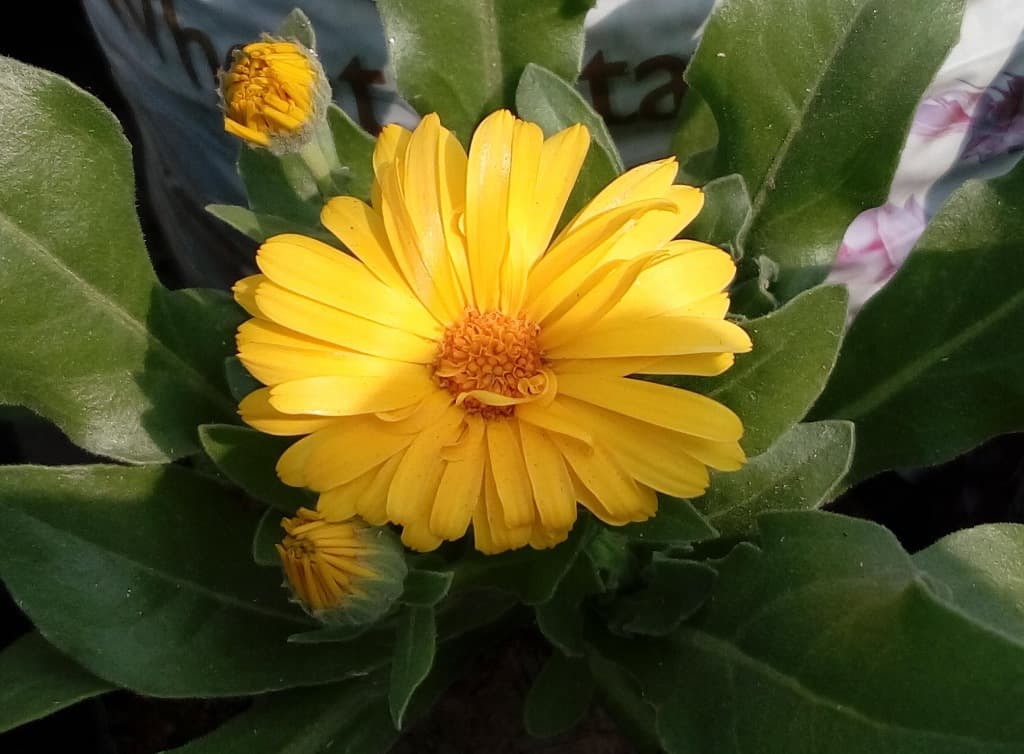
Colors:- Beautiful calendula flowers can be found in bright Yellow to Sunny Orange colors. Calendula flowers with the bright red core are very popular among gardeners. You can also find calendula with yellow core and red-tipped petals.
Shape & Size: – The size of calendula flowers can vary from 2 to 4.5 cm in diameter. This variation mostly depends on the variety of plant grown and availability of nutrition in the soil.
The shape of almost every type of calendula is the same. The flower looks perfectly symmetrical, circular and flat from the top and a bulge at the base where the seed develops. No matter whether the flower is big or small these similarities are very easy to observe in calendula flowers.
Variations: – The most common variation with calendula flower is the difference in the layering among various species and varieties. This variation can be easily observed. You can notice some flowers with only one layer of petals and others may have double or multiple layers of petals.
The Bright and beautiful flowers of calendula and the variations has made flower very popular among gardeners.
Calendula leaves
The leaves of calendula are long, green and attached directly to the main plant body. Initial leaves are longer than other leaves.
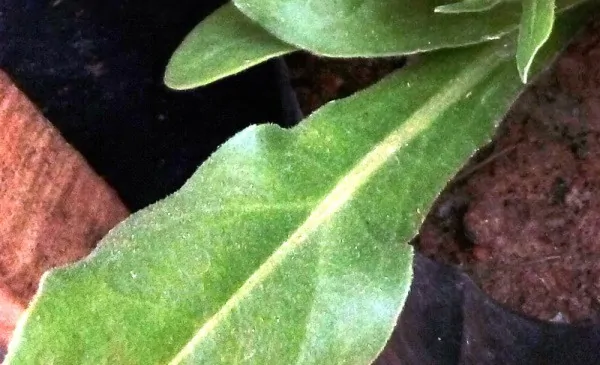
You will notice that the size of leaves reduced just before the formation of buds. In a healthy calendula plant, the best leaves can grow up to 6-7 inches i.e 15-20 cm in length. In an ideal condition, the blades of calendula can widen up to 2.5 inches.
Though the size of calendula leaves vary with variety the shape is almost the same with all variations. Before flowering, the leaves of calendula can give green lustrous foliage to your plant.
Calendula height
Most of the Calendula varieties including Calendula officinalis can attain an average height of 1- 3 feet i.e. 30-90 cm.
Generally, a calendula plant with 10-15 inches height can bloom easily. In highly nutritious soil these plants can grow up to 1 meter i.e., 100 cm but it is really rare. In fact, I have seen such growth only twice in the last 6 years in mine.
Calendula Temperature Requirements
The ideal temperature to germinate calendula seeds in 18-degree Celcius. Though you can grow a mature plant in temperature between 15 to 20-degree.
All Calendula plant varieties love warm temperatures. But too hot summer days are not good for the plant growth and it may look burnt.
The best time to grow calendula is obviously the spring season. Once grown it can bloom till the first frost in the falls. You just need to protect the plants from burning in hot summer days.
calendula flower seeds
The seeds of calendula are mostly 3 to 5 mm in length. calendula seeds look very similar to fennel seeds or cumin seeds. The only difference is with the size.
How to identify real calendula seeds?- Sometimes it is challenging but the main difference to observe in the length and especially the curling of seeds. The real calendula seeds are slightly curled at both ends and this is not common with cumin or other seeds.
How do you plant calendula?
The Calendula plant can be grown with some quality seeds. You just need to buy some calendula seeds from your nearest seed store or check out my personal favorite seed on Amazon.
How to grow Calendula from seeds
- Steps1: You can sow seeds directly in flowerbeds or in a pot. I personally suggest to first grow the seedlings and then transplant it to desired locations. Start with some quality calendula seeds.
- Steps2: Prepare the soil. I use a mix of 1:1:1 that is 1 part garden soil, 1 part cocopeat, and 1 part compost. Mix it thoroughly and add a spoonful of contact fungicide in the soil.
- Step3: Spread the seeds evenly. Place the seeds evenly in the soil mix. Try to separate each seed by at least 0.5 inches or 1 cm from others. This will provide enough room for seedlings to grow healthy.
- Step4: Water thoroughly and regularly. After sowing the seeds, water the soil thoroughly for the first time and after that keep watering on regular intervals.
- Step5: Place the seedlings in semi-shade. If possible place the new seedlings in partial shade for few days before transplanting. This will protect the soft plants from harsh climatic conditions.
- Step6: Transplant the seedlings. You should transplant the seedlings After 15-18 days or when the seedlings gain 4 or more mature leaves.
- Step7: Change the pot for the first two weeks. The first time you should transplant these calendula plants in 4 inch pot. Place these pots in semi-shade for 7-10 days. After 10 days propagate these seedlings to bigger 8 or 10-inch pots.
- Step8: Fertilize the plants regularly. You should fertilize these plants regularly every 10-15 days. I recommend using organic fertilizer or use NPK 5:5:5 or more.
- Step9: Dehead the dead flowers. Once grown these calendula plants start blooming in 55 days. You should deadhead the spent flower to encourage fresh flowering.
- Step10: Use fungicide or pesticide. You should use a chemical fungicide or pesticide only when it is very necessary. Actually, I would recommend trying some organic fungicide or pest control measures instead of harmful chemical means. For help, you should read- How to kill fungicide?
You can also check out my previous article on How to make potting soil for indoor plants? just for help.
How to Harvest Calendula Flowers
You should harvest calendula flowers in the early morning or in the evening when the temperature is low. To harvest, the best quality flowers follow the steps carefully.
- Water the plants 10 minutes before harvesting. This will keep the flowers fresh for a long time. Watering also helps in faster blooming and protest the freshness.
- Only pick the fully grown flowers. The best flowers to chose are those having only a few fully open petals. The rest petals will open up on its own. These flowers will stay healthy for a very long period of time.
- You should harvest once in 4 days or if possible try to harvest only once in every week from each plant. This frequency will maintain healthy and mature growth. It is really commercially profitable to follow these steps.
- After harvesting store these flowers in cold zones to preserve the freshness and also to protect the nutritional loss.
calendula plant pictures

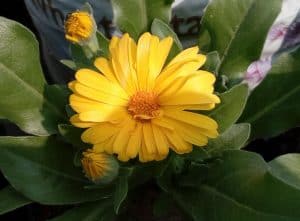
calendula spacing
A minimum of 6-8 inch distance between each calendula plant is recommended. Even in flowerbeds, you should do some thinning to make adequate room for plants for healthier growth.
calendula companion plants
Best companion plants for calendula are- Marigolds, Petunias, dianthus and few more. I personally grow french marigolds and petunias along with calendula Officinalis.
calendula Officinalis is one of the best variety of calendula to grow in containers or in flowerbeds. It is also grown commercially for medical and cosmetic purposes.
Problem with Calendula Plants
Though calendula plants are adaptable to sudden temperature change and insect attacks. But these plants are still prone to some disease, especially in high moisture conditions.
On rainy days, calendula plants are prone to aphid attacks. Powdery mildew is another big problem for the calendula plants and seedlings.
Actually, overwatering is the major cause of Aphids and mildew in the Calendula plant. It is a big problem but you can handle it with some mild soap and oil mix. Spray the mix in every alternate day over the leaves. Do this procedure in the early morning when these pests are active.
Another disease commonly observed in calendula is the leaf curl. Again this is a side-effect of overwatering and fungal or mildew attack. It is curable but if seen on a large scale, then you should remove the plant to protect the others from the attack.
For healthy growth, you should spray quality pesticides and fungicide every month starting from the seedling stage.
calendula flower benefits
- calendula flowers are used for decoration purposes, though you may not like the smell. But it adds color to your collection. Also, flowers are the best stress buster for all of us.
- It is well known that Calendula is an edible flower. So calendula is grown commercially for consumption purposes. These flowers are considered healthy and nutritious. You may like calendula in your salad plate.
- Calendula tea is also very popular. It is a good and healthy alternative for tea or coffee. I fact, I like the calendula green tea a lot- you can try it on your own. It is a relaxing drink that is considered anti-toxic or just purifies and improves digestion.
- Cosmetics made of herbal ingredient uses a lot of commercially grown calendula worldwide every year.
calendulas in containers
Yes, you can grow calendula easily in a container or pot. The 8-inch pots or container with at least 8-inch depth and 4 to 5 in width is ideal to grow calendula.
I would recommend using a little bit wider container, it is especially to provide room for root growth. Also, it is helpful in maintaining soil nutrients and watering.
FAQ About Calendula
Is calendula easy to grow?- Yes, calendula is one of the easiest flowering seasonal plants to grow. In fact, if you are a beginner then I would definitely recommend you try calendula or marigolds for the first time. Just sow the seed, maintain the moisture in the soil and provide some sunlight- that’s all you need to do. Do this with love and care.
How long does it take to grow calendula?- In ideal conditions, calendula needs 60-75 days to bloom after sowing seeds. This time may vary due to the quality of seed, available nutrients in the soil and temperature.
Does calendula come back every year?- Yes, They do. Especially calendula grown in flowerbeds does come back every year. This is mostly due to the seeds fallen in the previous season. The is interesting to see calendula grow every year on its own in these beds. There is no need to sow fresh seeds every year, if you let the seed grow, mature and fall on their own.
How often should I water my calendula?- In summer days, when the temperature is above 26-degree Celcius you should water calendula every day. Else watering on alternate days is always recommended. Remember never to water too much. Don’t overwater calendula plant, it can lead to root rot. Water only when it is really required.
Should I deadhead calendula?- Yes, you should deadhead calendula plants regularly especially if it is grown in containers. Removing dead or spent flowers will encourage fresh growth in the plant. Also, regular deadheading keeps the calendula plants healthy and green.
Does Calendula need full sun?- Yes, Calendula needs full sun at least for 3-5 hours every day especially when the night temperature is below 20-degree Celcius. Calendula plant can also be grown in partial shade where the temperature is above 25-degree Celcius.
How tall does Calendula grow?- The average height of Calendula Officinalis is 1-3 feet or 30-90 cm. In fact, I have much sorter plants with quality bloom. So the size of the plants may vary with climate, nutrition, and variety of seeds selected.
Is there a difference between calendula and marigold?- Yes, Calendula and marigold are two different flowers. Sometimes The name- pot marigold might be confusing as it seems to be as Marigold. The only similarity between calendula and marigold is their common family ie., the Asteraceae family.
Can you grow calendula in pots?- Yes, Most of the calendula varieties can be grown in pots. In fact, calendula is one of the best flowering plants to grow in containers and pots.
Is Calendula an annual or perennial?-Calendula is an annual plant. Most varieties of calendula are annual in nature but it might come back on its own the next season. The mature and dispersed seed of this season can re-grow in the next spring.
More About Calendula
Calendula plant for sale- You can buy the best quality plants from your nearest nursery. Else for some quality seeds, you can try these calendula seeds.
Calendula flower season in India, US, and Worldwide- Worldwide calendula is grown when the frost is over or the temperature is above 15-degree Celcius.
In India, the seeds can be shown in the month of October and it will start flowing in January and continues till May or probably June in some places.
In the US, you should sow the seeds inside a few weeks before the last frost. After that move the plants outside in proper climatic conditions. Only move the plant outside when the temperature is above 15-degree Celcius.
Are calendula good for bees?-Yes, Calendula flowers are good for bees, they do attract bees. If you grow calendula in flowerbeds then you may find some butterfly along with bees.
Can you smoke calendula?- Yes, you can smoke Calendula but I personally don’t like it in that way. Although you can try if you wish, or just try mixing it with other items- maybe.

